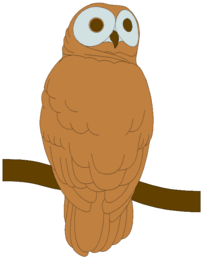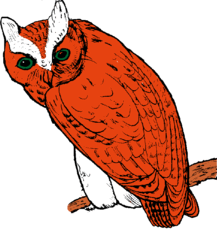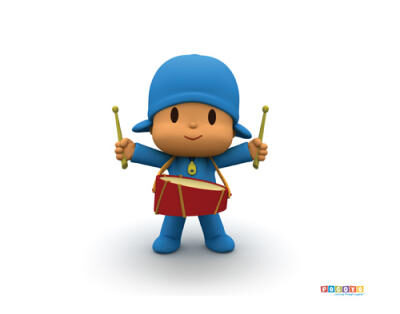KATHRYN'S PERSONAL DRUMMING BLOG
(NB: This is in reverse chronological order)
Click on the picture below to see a really cute video clip of 2-year-old Pocoyo trying to convince his animal friends that drumming is the best thing since bees knees!. Other Pocoyo cartoons share the discovery of "found objects" percussion [POCOYO-NOISE TO MY EARS],the joys of making your own music [POCOYO-DRUM ROLL PLEASE], and exploring the effects of different kinds of music [POCOYO-MUSICAL BLOCKS].
And now for the Blog (Lost on 9 February, Restarted 12 February 2013).

Where did the content I just added go? Who knows. Rhythms for: We got the dragon in the bathtub and theme from New Tricks (It's all right, it's OK)
March 2015: Where We Are Now?
Lots of interesting happenings this month. Again, no attendees at the CSC HealthRHYTHMS circle. Then, at the SKUUC circle we did an outdoor walking meditation, followed by singing "Peace, Salaam, Shalom" in a circle, also outside. Then, after drumming (with variations) our way around the medicine wheel, I showed attendees how to play all 5 of the Daroga 5 Elements, allowing them to add variations if they wanted, and we closed playing "Three Little Birds" while playing the reggae rhythm (with some playing on the 1 and the 3, others on the accented 2 and 4). I led up to that by having them play Pieces of 4, which helped a little. Some people still think they need to know the words of the song to do this, but they are learning!
At the Reaching Across circle, we also drummed the African 5 elements (which they loved), and sang "I Can See Clearly Now" to the reggae rhythm--this went great!
At the DSP circle, Wendy taught the reggae rhythm blended with the 5/8 riff (drum 5 tones to the first 5 of 8 eighth-notes), alternating or doing as two parts--very effective. Will have to try that next month.
 08 February 2015: Weekend of Circles.
08 February 2015: Weekend of Circles.
On Thursday, although I had one person sign up for the HealthRHYTHMS class at the CSC, no one showed up! On Friday, I spent about an hour planning out what to do at the SKUUC circle, I actually left all the handouts and rhythm sheets at home. Nevertheless, the circle must go round, so we started with the Go Away and Come to Me rhythms, then did the entire medicine wheel. Since folks seemed to be enjoying the simple rhythms, we started with the skeleton, then when I felt they were entrained we added variations. That seemed to work, so when I felt we were ready to move on, I asked them to return to the skeleton, then fade out. They were able to follow oral instructions, but not the hand signals to count down, so dropped that at Candy's request. There were 8 participants, including 7-year-old Melissa. When we reached the Spirit Horse rhythm (lower world), I decided thet, since there was not going to be time to do the "fun" exercises, to introduce the concept of fills, and take turns doing them in the 3-beat rest at the end of each cycle--each person doing their fill for 4 cycles, then moving on to the next person. Did two circuits, then let them jam on the rhythm, adding fills as they felt like it. This worked, but I did learn that this group LOVES to learn the rhythms by counting through a whole cycle--e.g., the Buffalo Walk is 1 through 12. with notes played on beats 1, 5, 6, and 9; Spirit Horse is 1 through 16, notes played on 1-13. Weird, but it works for them. We finished by playing Toby's element rhythm that is represented by the first variation of the cross-pattern: B T T T T T, extended into an open jam on the triple-meter pattern.

03 February 2015: Long Time Gone, Not Forgotten!
Looks like it's been another 7 months since I updated this section! I've been fairly active during that time, going to as many drum circles as possible, especially the Bay area Drum Circles, the Drumming as Spiritual Practice, Fern's International Drum Party (plus the drum jams I could get to), Jeni's East Bay Drum Circle, and Kathy and Wade's Drum Circle for Life. Fern's drum jams often included some instruction. Last fall, I started taking doumbek/darbuka lessons from Mary Ellen Donald, and am continuing them now (they were in Alameda, at Bobby Wallace's Total Rhythm Studios for the first session, but now they are at her home studio in West Oakland. In January, I restarted the Tuesday "commute" down to Soquel for Jim Greiner's djembe sessions. So, I am learning djembe and doumbek, and gaining experience with the other instruments. I've also acquired several new drums, and now feel that there's enough for my current circles.
Some ideas of activities for circles I've picked up are:
- Lots of different parts for Fanga, thanks to Jim and Maggie.
- An additional part for Heather's 3-part rhythm, which some call Kuku.
- Some parts for what Kathy and Wade taught as Kassa (also in the Dworkin book).
- Some variations on "Pieces of 4/6/8"--choose only 1 or 2 notes per beat, vary instrumentation.
- [From tonight's class with Jim]--Show case parts, like "solo orbit", from a starting point of everyone picking a short phrase and repeating it ad infinitum, by playing the individual parts loudly one at a time, then having people drop out with their part, and re-enter after 2-3 cycles.

03 June 2014: Long Hiatus, But Back in Action.
After a very long hiatus consisting of a complete revision of my bilateral knee replacement surgery of last year, I am finally back to drumming. I feel as if I have forgotten a lot, but all it takes is taking my place in a circle, relaxing, listening, and suddenly I can feel the groove.
revision of my bilateral knee replacement surgery of last year, I am finally back to drumming. I feel as if I have forgotten a lot, but all it takes is taking my place in a circle, relaxing, listening, and suddenly I can feel the groove.
Last Friday, I held my first postsurgical drum circle at SKUUC. We were able to work all the way around the Medicine Wheel at the beginning. Then, for the rhythmic naming, I introduced myself with a fairly complicated rhythms, but all but one person caught on immediately. Then the others introduced themselves with rhythms that ran the gamut of complexity quite well. We had a circle of 6 Candy, Van, Cheryl, Lavon, Walt, and me). I tried the Starting-To-Solo exercise I found on Linked-In; pick two random numbers between 1 and 8, and make up a solo of those many strokes (simple things played simply well). All but two caught on, an eventually even they were able to take a stab at it. We closed with a soundscape.
The rest of this week has been spent re-exploring some local drum circles. The BADC circle for big, noisy drums was way fun, but I really did a number on my back toting my X8 custom drum to John's back yard. There was a fairly small group, but all were intermediate in skill, and we had a great time jamming on several different duple rhythms. I also tried Drumming the I Ching, and found it deeply relaxing, easy to entrain to, and intriguing! We drummed meditationally to the rhythms of the 8 elements (heaven, earth, thunder, water, wind-wood, mountain, fire, and lake). I need to get the trigrams and hexagrams in a format I can use, but this is something that should be useful to work in with the other spiritual drumming to both use personally and to teaach. The next thing I tried was the Drum-Dance-Chill group, which was supposed to teach a method for learning multi-part rhythms. The facilitator was not very good (but he was friendly and enthusiastic), and primarily taught each part individually to the different groups (djembes, congas, cow bells, rattles, etc.). Lots of train wrecks, and nothing about how to get out of them. He used the concept of the break, and never succeeded in getting people to feel more than the pulse (which should have been enough, but wasn't). Will have to see if other sessions are as futile.

January 15: Reaching Across Reaches New Heights.
To day we had a group of about 8-10 people at our circle at Lake Elizabeth. Once again I let everybody introduce slow variations of the spiritual rhythms, which everyone seemed to enjoy. Then we moved on to rhythmic naming--because everybody chose relatively simple rhythms, it was a lot of fun trying to remember each for the echo part. Then we tried the exercised Wendy introduced at DSP in the past: Play the son clavé rhythm with almost any duple rhythm. It worked, and the participants were all very proud of themselves. That went so well that I introduced them to Heather's 3-part rhythm, which they also did very well! A very satisfying session!

13 January 2014: LEARNING again!
Tonight at DSP, we had a fairly small group, but almost everyone had at least some rhythmic experience. Wendy started us out by demonstrating the rhumba rhythm (also son clavé), and we played it for a while to get used to it. Then she told us to feel free to drop in and out with it on every rhythm we played during the evening. We ended up playing 5 or 6 different rhythms, with 3-6 different accents, but all based on 8 beats. The basic rhythm worked very well with all of them, and also sounded great with lots of different percussion sounds--shakeres, frogs, kalimbas, clavés, whatever. Everyone really paid attention to everyone else, so the volume-matching was particularly noteworthy.
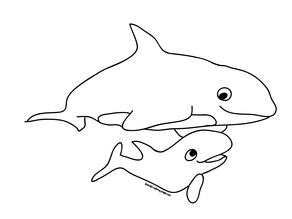
January 2014: Long Medical Leave and Catch-up.
Well, my double knee-replacement happened on June 12. Things seemed to go well, and after 3 days at Kaiser-Fremont Hospital, I spent 12 days at KPCC (the Kaiser skilled-nursing facility in San Leandro). Then followed about a month of home physical therapy (and no driving!) before I tried facilitating a drum circle. The Reaching Across circle for July was held at my house, and all went well--it was pared down a little but we managed to jam/meditate on the spiritual rhythms, do rhythmic naming, jam on several other rhythms, and close with a sound-scape creation.
Before the surgery, I stopped going down to Aptos for Jim Greiner's class, and started going to John Waller's Djembe and Middle Eastern Drumming (doumbek and frame drums) classes in Pleasant Hill. His teaching style differs greatly from Fern's, and we spent each class learning a rhythm, and then jamming on that rhythm to a CD he had made for us, and gave us at the end of the session. I felt much freer to use substitute sounds here, and watching how the students reacted to it inspired to introduce more Middle Eastern rhythms into my drum circles. In the Djembe class, we learned several parts to four different African rhythms, which I found amazing. Sometimes, each person would cycle through all the parts, and other times we would pick a part and try to stay with it while listening to the other parts. Not much room for variations unless John called for a jam session--I like learning both skills.
After surgery, I stopped going to Tuesday classes altogether and only managed to get to Fern's class about twice in August. By the second week in September, I was in the hospital for 4 days because of severe anemia, a systemic E. coli infection that started as a UTI, and chronic kidney failure. The infection cleared up in about 6 weeks, the anemia has improved slightly, and the renal failure is being monitored but not treated. I am trying to attend as many drum circles as I feel comfortable doing, particularly Heather's Sunnyvale Community one and The Table's Drumming as Spiritual Practice one. I will add the ideas I picked up from these as they are re-introduced or I remember them.
The Reaching Across circles are going great! We now have a core group of about 5 or 6 players who come regularly, and are getting more and more relaxed about their playing. Rhythmic Naming and Solo Orbit (to a number of different pulse patterns) are popular exercises, and the participants are constantly improving their ability to match/echo rhythm. volume, and tempo. In December, the circle provided some accompaniment to Christmas carols at the annual party, and we had lots of participants who had never drummed before (I limited the drums to frame drums and tambourines). We continue working on multi-part rhythms, but they still can't seem to handle more than the primary pulse for one part, the main djembe part for another, and (very occasionally) a singing part. Will keep trying, and not add frustration or pressure to do more.
The HealthRHYTHMS circles at the CSC are also doing better. We are back to requiring sign-ups beforehand, so attendance has picked up. I rarely have time to fit in the Guided Meditation drumming, but people seem to like it when I do (but they still only stay for the hour, not much longer). For the January session, to augment the Inspirational Beats, I suggested making up chants (had to show an example), and two of the 5 people actually did. By skipping the Guided Meditation, I had time to repeat the wellness exercise (alternate-nostril breathing) and--for the first time at WC--complete the closing.
The church circle is also picking up. Some of the people in the Middle Eastern drumming class in San Felipe Park visit us occasionally, and we have had additional visitors find us too (two via this site); our attendance has been around 8 for the last few months, not 4, which is much better for the participants. Encouraging simple variations to the meditational rhythms at the beginning, and to the rhythmic naming, seems to bring out bursts of creativity. This group is also working on multi-part rhythms, but I allow more variations, instead of making people stick to a part, which seems to shut some participants down. I am also trying to close each session with a soundscape creation--again, the more participants, the more experimental the sounds get, and the more instruments and sounds appear out of nowhere. People usually end up enjoying this, after taking their time about trying different instruments. In January, we had a didgiridoo player, who fascinated everyone.
 17 May 2013: Long Catch-up!
17 May 2013: Long Catch-up!
It's been a very long time since I've made any blog entries, so it's about time I tried to catch up! In April, I attended the World Rhythm Festival in Seattle, and had a wonderful time. Lots of inspiration, and ample opportunity to play and learn at the same time, PLUS I had my first experience playing in a megacircle with Arthur Hull! Wow!
One of the rhythms I learned, that was later reinforced at Heather's community drum circle for April, was a 3-part African rhythm. Part I is a simple repetition of B T-B T-B T-B. Part II is [ • • T-T T / • • T-T T ]. Part III is (I think) [ B-B T-T B-B • ].
At Jim's class, I have been having private lessons, and am progressing rapidly with both duple and triple-meter variations. I am now using cross-pattern with the duple meter, which will eventually result in more versatility, plus I can now practice it for longer periods just doing the simple stuff.
Since I was originally going to have bilateral knee replacement in early May, I arranged to have the Starr-King circle join Chris and Jo Ann Schriner's drum-improvisation class for May and June. Since my surgery was postponed, I joined the group in May--it was lots of fun! There were 4 from SK and 4 from MP, which made an excellent sized group, and we drummed longer than originally scheduled by about a half hour. I led a duple-meter free-drumming session at the beginning, and a sound-scape creation at the end, In the middle, Jo Ann led a strictly improvisational session that also lasted a half-hour, which apparently was unusual for them. Depending on when my surgery can be rescheduled, I may be joining them again in June! For the CSC session, I was able to give the entire HealthRHYTHMS protocol (minus the guided meditation) for some newcomers, which I find most rewarding.
I went to Fern's Redwood City circle instead of Jim's class and had a lot of fun just drumming along with everybody. There were quite a few new people, and everybody seemed very friendly, but played quite loudly, so some of the softer instruments could hardly be heard. At the very end we did a "quiet"session, which was my favorite part, probably because I got to play Eric's "bata?" drum, which had a wonderful bassy tone.
John taught us a really neat rhythm tonight (two of three parts, anyway), as follows: Part I = [fT fT B S-B], and Part II = [T T-T T / S S-S S], like "boom de yada boom de yada." He said it was from northern Mali and was an agricultural rhythm.
 09 April 2013: Is there Such a Thing as Too Much Learning?
09 April 2013: Is there Such a Thing as Too Much Learning?
Sunday, April 7 was a big day for drumming--Drum Sunday with Puerto rican Bomberas Music, then Drumming as Spiritual Practice! For the bomberas, we learned two rhythms, neither of which had a name I can remember (though they did have names). These rhythms are played on a special Puerto Rican drum that looks like a really fat toomba with a goatskin head, originally made out of the barrels used to ship sugar in. It is fairly simple to play them on djembes and congas too, but the people with doumbeks had trouble making the four different sounds. The first one's basic rhythm went: [B • T-T T / B • T-T T]; we also learned the introductory break--[T T T T S • / T T T T S • B B B • / B • T-T T (into regular rhythm) ]. We also learned the song to go with it, but I can't remember that either! The basic second rhythms went: [B • Rm T-T Rm / B • Rm T-T Rm], where Rm indicates a "rim shot", with the tips of the fingers hitting the rim of the drum. This second one also had a song, but of course I can't remember it.
At DSP, we learned three rhythm building blocks that sound good when you play them against each other, and can also be strung together to make songs. The first one was something like: [T-T • T-T T-T T-T •T-T •], the second was 7 evenly spaced short tones, followed by a rest and 3 evenly spaced longer ones, and the third was 4 evenly spaced groups of 2. We tried it as a round, but everybody got mixed up. When we tried it as just play any one you want, but mix them up, it came out fine.
On Tuesday, I was the only one at Jim's class, so I got a 1-hour private lesson! He taught me this variation of the duple rhythm--[B T-T T-T T / B • T T]. My particular challenge is to lead consistently with the right (dominant) hand to get it to sound smooth. Not playing the bass gives the whole rhythm an uplifting feel. Next, I learned to practice alternating nondominant-hand basses and tones without any "air-drumming" or "ghost drumming." Apparently, ghost notes are a much more advanced technique, that should come later.
 04-05 April 2013: A Grand Circle of Two Plus Growth By One.
04-05 April 2013: A Grand Circle of Two Plus Growth By One.
Thursday was supposed to be another HealthRHYTHMS workshop at the CSC. However, Marj was the only one who came, and she arrived a little late, so I decided just to have a regular circle, but with a little more information included along with the ABCs of drumming. We did one duple-rhythm session and one triple-rhythm session, then closed with a soundscape creation. For the instruction I covered the three basic ways of doing variations: adding stuff, leaving stuff out, and substituting sounds. In between sessions, I explained a little more about how to make the sounds (she was playing a djembe), and then introduced the concept of open vs. closed sounds. She seemed to appreciate the information, and came up with some complex variations that fit in beautifully. I have to keep reminding myself that my primary job as leader is to provide a consistent pulse and basic rhythm, but it's coming!
At the SKUUC circle on Friday night, we had our "usual three" (Walt, Lavonne, and Betsy) plus Natalie, who brought a set of beautiful Moroccan "bongoes" that sounded quietly beautiful. I successfully held the invocation of the spirits, using all 7 directions, in about a half hour. We then played Ayoub for about 15 minutes as a free-drumming session--the group's ability to come up with amazingly complex variations that fit together is truly awesome! Next we did the Rhythmic Naming exercise with entrainment drumming of each name rhythm for about 2 minutes; followed by another 10-minute free-drumming session of the triplet rhythm; creation of a soundscape around the theme of spring, renewal, and death; and a closing free-drumming session of the rhumba (differs from Ayoub by substitution of a bass for a tone). Everyone seemed to like the session, and Natalie really added a new dimension by playing quietly, which lead everybody else to play a little quieter to hear her. Betsy requested chanting, so I'll have to remember to work that in next time.
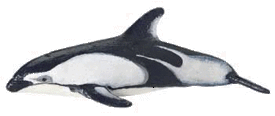
30 March 2013: A Festival-Here in Oakland-That Was Almost Perfect.
Today was the day of the Oakland World Rhythm Festival, and I went for the whole day! Kiazi Malonga (Malonga Casquelard's son) taught the first workshop, which was quite fascinating. A lot of rhythms were taught at the workshops, and because there were so many beginners each teacher also taught how to do the sounds (bass, tone, slap). However--no one passed out any handouts, and although I could follow along as each part was taught, at the end of the day I couldn't remember anything! John Santos gave a really great demonstration of Cuban music, with several different kinds of drums, Robert Wallace taught several parts to an Afro-Brazilian rhythm. There was another African teacher who was excellent, and someone named Susu gave the Mid-Eastern music workshop. Robert's workshop was informative, but I am SO glad I'm learning from Jim! Perhaps by next fall I will be ready to take an ensemble class from Robert, but getting more rhythms and variations internalized first would seem to be in order. Susu's workshop was interesting--but I thought she went WAY too fast for beginners! We learned Ayoub, Baladi, Karatchi, and Malfoof after learning how to make doums and teks (this may be sour grapes because she took an extra 45 minutes for the workshop, and I missed most of the Great Oaktown Drum Jam), Nevertheless, the last 5 minutes of the GODJ (all I observed) was really spectacular. Everyone who is anyone seemed to be there--Kathy Quain, Andrea Turner, people from all of the other circles I go to. It would be great if this festival became an annual occurrence (so far as I can tell, the last one was in 2010).

20-29 March 2013: Lots of Catch-up!
It's been a fairly long time since I've made any entries here, and I have learned rather a lot in the last two weeks. One thing I particularly liked was Jon Weller's introduction to quite a few new rhythms at the Pleasant Hill Drum Circle. At least two of them were 4-beat patterns beginning with [B B B], then adding something different on the end, such as {B B B t-t-t-t], or [B B B-t t-t]. Another sounded seriously like he was drumming out the rhythm of the words in "We're in the Army Now." Then at Drumming as Spiritual Practice on Sunday night, Wendy's "lesson" for us was variations. Once again, she held the fourth and eighth beats of a 8-beat pattern open for adding (or not adding) a particular variation. We practiced leaving both spots open, adding a variation to one and not the other, adding the same to both, and adding different ones. It was not a popular exercise, but I found it intriguing. I THINK the pattern was something like [T-K-T K-T-K T • / T-K-T K-T-K T • ]. At the rests, we practiced adding 2, 3, 4, and 5 evenly spaced notes for the variations, and also substituting sounds (most people were playing the frame drum or the doumbek for this).
In Fern's class, we learned a new pattern to play on the drums that is based on the clave or bell part of a rhythm--the part is called the Long Bell. It goes [B T B T B B T B T B T B / B T B T B B T B T B T B]. This is considered a 12/8 pattern, and can be counted as 12 beats or two bars of 6 beats.
 15-16 March 2013: Two Circles on Successive Days--Fun But Self-Informing.
15-16 March 2013: Two Circles on Successive Days--Fun But Self-Informing.
Friday was the day for the Reaching Across circle, held at Vince's house. On the way down, Tim and I decided to hold it outside in the backyard, which was actually quite fun. I tried to keep it fairly low-key, and several of the six participants commented that they noticed that it was not as boisterous as usual. The activities I had planned all involved listening to each other--we played several rounds of what I called "Real Orbit," working up to Solo Orbit. The participants seemed to understand what was wanted, but couldn't quite pull it off, which may be a result of their memories being affected by their medications. They also had trouble controlling the volume when they were playing the support part (we used "I like ice cream"). Everyone had a fine time during the free-drumming sessions, and we created an EXCELLENT arhythmic soundscape around the theme of spring/rebirth/renewal. It seems that they can get along fine playing together without a pulse if I keep reminding them that they are doing a great job--without the reinforcement they tend to lose focus, get frustrated, and stop.
Saturday I led a drumming session for the CSC Mt. View program. It was held at a very nice conference room in the Park Pavilion building at El Camino Hospital. There were 6 participants there, and 3 of them I remember from the CSC-SV days--Sarah (who's also in the Compassionate Communication class I'm taking), Nancy, and Frederica. We did the HealthRHYTHMS protocol, using Lourdes's spleen exercise for the wellness activity, the change-one-thing guided meditation, and using solo-orbit to fill out the inspirational beats session (we did have an excellent drum-story to start out). Everyone did extremely well, and the group entrained rapidly on each of the smaller contained sessions. We filled out the time with a triplet-rhythm session, and a soundscape creation (again using the spring/renewal/easter theme), for which there was a very gentle rhythm throughout--most people loved the non-membranophone instruments for this, and switched around a lot. I think this went the best of all the HR sessions I've led so far.
I felt too tired to go to the DRUMMM session at Ashkenaz in the afternoon, but it turned out that it had been cancelled, so I didn't miss out after all!
 10 March 2013: Back to Spiritual Practice Drumming.
10 March 2013: Back to Spiritual Practice Drumming.
Finally, tonight was my first time back to Drumming as a Spiritual Practice (DSP) in about a month. It was a fairly small group for this series, and Tami was not there, so there was a lot of drumming and not so much meditation. Wendy (our facilitator, Wendy Loomis) started us out with Ayoub, but with a twist--after three plays of the basic pattern, reverse the syncopation. I think this would be notated like this: [D • T-D T /D • T-D T /D • T-D T /T-D D • D T/]. Sounds really nice, and you can vary the reverse-syncopation so different people/instruments are doing it at different repetitions. We did a lot of instrument switching, and I played several different frame drums and talking drums, to get used to them. We also played around with free-drumming to varying 8 counts and 6 counts--lots of fun, but I can't remember the specific patterns. We also did quite a bit of playing out of chaos, using some of the melodic mbiras and other metal percussion instruments without a discernible pulse--occasionally one would crop up, but it wouldn't last long, or would be superceded by a different one. After a while, I realized that it was there but clearly wanted to be unstated, and then playing with it became easier. All in all. a wonderful experience!
 08 March 2013: More of the Same, But Different.
08 March 2013: More of the Same, But Different.
Jim's class was way fun Tuesday night. We did the usual two rhythms, but did an exercise in between that was quite interesting--each person created their own "part" by designing their favorite variation as a pattern that could be repeated. He played the pulse, and one by one, we each played our own part until he was satisfied that we were actually repeating the same thing. Then we played them all together. I was surprised when he said that I had changed my part, but looking back on it, it's possible that I just couldn't remember it--I thought I was alternating one tone with 4 tones, but I had a hard time deciding between 4 and 5, so perhaps it was supposed to be 5. At the feedback, he mentioned that I also changed the hand pattern, which was when I learned that the "part," once set, does NOT include any changes in sounds, hands, or accents (i.e., no variations at all). Will have to remember that for the future--incorporating the concept into my own circles may make our experimental rhythms easier to remember and reproduce.
Fern's class on Wednesday was also interesting. A friend of hers, Bernadette, joined the class, and just having three students instead of two brought a little more variety and dynamics to the class. We played Chiftetele on frame drums for a long time, experimenting with various solos to do for the last part of the rhythm. Then we switched to djembes, and did some exercises to get us used to varying the sounds and the speed at will. Doing [ B B T T S S ] over the regular cross-pattern is a lot harder than you might think, but by the end of the class we could all do it!
Thursday I thought at first no one was going to come to the HealthRHYTHMS class, but just as I was loading the last of the drums back into the car, Arlene came. There wasn't time to do the protocol, and I had no luck playing her bamboo flutes, but we were able to do a nice duet (duple) with her on flute and me improvising on djembe, then another one (triplet) with me on djembe and her on bodhran.
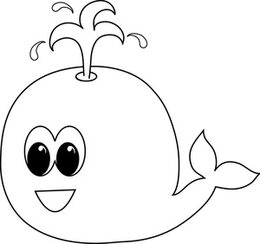
03 March 2013: Sunday Drumming.
Today was a day of mixed blessings. For the church service, Jennifer and Ray were supposed to lead our participation in "Turn the World Around," but they did not come early for a promised rehearsal, and we really had to wing it. Taking everything into consideration, the total presentation went rather well--Ray's guitar accompaniment was sparse enough that it didn't interfere with our chosen rhythm, and we were able to all play--but I sensed that the rest of the drum circle people were kind of disappointed. Nobody but Jennifer was aware of the total arrangement even after she explained it, so we all seemed equally confused.
Today was also Drum Sunday, with Debbie Fier introducing us to Mid-Eastern rhythms. She started us out with Baladi, but her version was different from Fern's or Jim's. The basic rhythm was the same [D-D • t / D T ], but she had what she called "slaps" in the fully noted version [ D D tkS / D tktkS], and the variations also featured these slaps. They were described as the Grab sounds (closed) in other doumbek annotations I've seen. It was fun, but of course I had trouble incorporating them and keeping up with the rhythm. We also worked on an exercise of Keith Terry's for working with 12 beats and body percussion. The basic exercise seemed to be (with 3 9 ):
| 1 | 2 | 3 | 4 | 5 | 6 | 7 | 8 | 9 | 10 | 11 | 12 |
| Clap | Chest | Chest | Clap | Chest | Chest | Thigh | Thigh | Hip | Hip | Stamp | Stamp |
Other breakdowns were 9 3, 5 7 and 7 5, with vocalizations on the 1s.

01 March 2013: SKUUC Circle Rocks!!!
Tonight the SKUUC circle met; we were a small but enthusiastic group! Roy (our ministerial intern) has asked us to accompany some singers on "Turn This World Around" at the Sunday service, so we practiced doing it several different ways, and feel that we can do a fairly decent accompaniment to whatever is thrown our way.As usual with this congregation, there is no direct communication, so we will try to show up a little early for the service to see if they want to rehearse--otherwise we will wing it. I used the most-probable accompaniment rhythm as a drum call for opening the circle. Then we invoked the spirits of the Medicine Wheel, followed by a round of Solo-Orbit for a sort of rhythmic check-in. I noticed that Walt was trying to play some of the frame drums, but was having trouble, so we spent some time learning frame drum techniques--2 sitting positions; beaters, tippers, bare hands; bodhran vs tar vs buffalo drum, after which everybody seemed much more comfortable playing them, and chose to play them more. Our challenge for the day was to "perform" John A's arrangement of "Row, Row, Row Your Boat" [B B B T-T / B T-B T-B T-B / T-T-T T-T-T T-T-T T-T-T / B T-B T-B T-B ]. By the end, they were actually doing it fairly well, but didn't realize it. We will keep working on multi-part rhythms and other rounds to get people used to singing and drumming at the same time. We closed with a free-drumming session of Econcon.
 27 February 2013: New things to Learn!
27 February 2013: New things to Learn!
Jim's class was really fun today. There were only three of us, and we're fairly spread out in time we've been studying. During the duple rhythm-- basic = [B • T T / B • T T]--Jim had me repeat a variation of mine that he liked: [B T T T / B T-T T-T T ]. It was fairly hard for me because it was part of a much larger whole, and at first I had trouble figuring out what he wanted. Then it became easier--I still need to work on getting into and maintaining the groove no matter how bored, distracted, or aggravated I am, so will practice more this week.
During the Triplet rhythm, my task was to try to play only the right-hand part of the basic cross pattern--Jim had to coach me through it, but I finally did it! The trick seems to be to start out with the basic rhythm--[RB LT RT / LT RT LT]--then drop out the nondominant hand Bass notes (change them to Tones), then gradually switch to "ghosting" all the nondominant-hand sounds, then finally stop sounding them completely. More "needs work" stuff to practice, but I like it when I can actually achieve the goal if even for a short while while I'm committing it to "muscle memory."
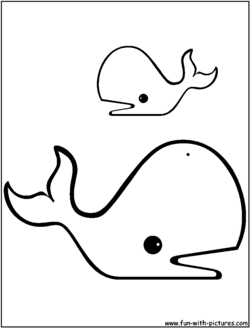
26 February 2013: Review of Basic Rhythms.
Now that I'm sort of caught up on the basics of this blog, I'll be filling this entry in from time to time. These are rhythms that are so basic that I tend to refer to other rhythms as being derived from them. In Jim's class we have two rhythms: the Duple and the Triple (triplet). The Duple is [B • T T / B • T T ], played R • R L / R • R L, with R being the dominant hand and left being the nondominant. Common variations include filling in the rest with a tone, playing only on the 1 and 3 counts, doubling up on any of the notes, playing only on the upbeats, etc.
The Triplet rhythm is sometimes called cross-pattern, and goes [B T T B T T], very evenly, with the hands designated as follows, with the right hand being dominant: [R L R L R L].
Both Jim (in the doumbek Rhythm Power workshop) and Fern have taught the following rhythms, all of which are in the maqsuum family:
Beladi is [D D • T / D • T • ]
Maqsuum is [D T • T / D • T • ]
Sahidi is [D T • T / D D T • ]
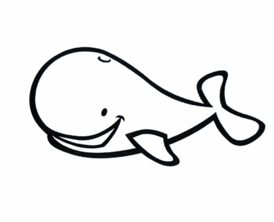
25 February 2013: Expansion!
Earlier on in the weekend, I was expecting to make a completely different entry today--a summary of a Drumming as Spiritual Practice session. However, through a combination of my own laziness/depression, I didn't go. What I did do was host a session of DJ Hamouris's Dulcimer Jammers group here. Instead of introducing a song, I chose to create a chaos-into-structure soundscape with dulcimers as the primary instrument, supplemented with small shakers and little frame drums and Sound Shapes. In general, the participants liked it. I showed them how to emulate the 4 basic percussion sounds (membranes, shakers, metal, and wood, and how to make the sounds of the four elements, then asked them to start from a position of grief and chaos and move toward good memories, as at a memorial service.They did extremely well, working both with sounds and rhythm, and eventually ended up in a "soft" place. In retrospect, I would have done better to use larger drums/sound shapes because of the depth of sound produced, and to point out at the beginning that it was OK to just relax into the rhythm for a while and see where it wanted to go next--the ending was rather abrupt, after resolving from what might have turned into a train-wreck, everyone just stopped. I felt rather proud of what they did, and hope to eventually develop this concept into an hour-long workshop.
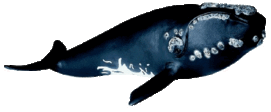 23 February 2013: Back in the Swim.
23 February 2013: Back in the Swim.
Well, Friday I hosted the healing drum circle for Reaching Across at my house. There were 9 participants besides myself, and they all seemed to enjoy themselves (at least nobody asked when we would be done). We started by honoring the spirits of the four cardinal directions, during and after which I went over the ABCs of drumming and the sounds of the Five Elements (see the Starr-King blog for details). Then we did a round of rhythmic naming, followed almost immediately by two free-drumming sessions--one in duple and one in triple meter. NOBODY in this group has any trouble differentiating the feels of the two rhythms. I followed these sessions with soundscape creation to two Native American poems--one about the culture before and after the onslaught of the white man (this one had lots of contrasting moods and emotions, which also caused no problems for the participants), and the other a story of the migration of Gaal, a female salmon, to her river of origin, and the difficulties she encountered on the journey, including the biological challenges as well as man-made sein-traps. We closed the session by allowing the final soundscape to evolve into a full-blown rhythm. The result was a beautiful, complex rhythm bathed in the shimmer of the chimes and the steady shakere sounds, as well as all of the drum sounds. I need to think about ways to get the participants to explore the nonmembranophones and to be less inhibited about changing instruments or combining them.

20 February 2013: Learnin' Where I Can.
This week, I didn't attend Jim's class because I'm nursing a cold, and Fern cancelled hers due to vacation (I could have gone Monday, but didn't get the message in time). So, I spent some time online, and discovered instructions for a "beach rhythm," buried deep within instructions on how to behave on the beach. this is the rhythm that I THINK is the back-up, universal rhythm played at the Bay Area Drum Circle Meet-Up Group circles. It's very simple--but when done correctly serves a multitude of purposes. I would notate it like this (this is my first experiment with the table function)
| 1 | + | 2 | + | 3 | + | 4 | + |
| B | T | T | T |
[ T-T T B • / T-T T B • ], with the bass note coming on 1, and the tones on the + of 2, 3, and 4. Perhaps it should be [ B • T-T T / B • T-T T ].
 14 February 2013: DISASTER STRIKES! But Life and Learning Go On.
14 February 2013: DISASTER STRIKES! But Life and Learning Go On.
When I made the preceding entry early on the morning of February 9, somehow or other BraveSites lost almost the entire content of this blog--a whole year's worth of my formal drumming education, experiences, and inspiration. All restoration attempts are for naught, so I'll be doing my best to continue the blog and notate important stuff as I remember it.
Tuesday in Jim's class, I learned a little bit more about the tones and slaps that apparently were giving me trouble in doing solos at the most marvelous Drum Eat Drum event at Alan and Penny's home in San Juan Batista on Saturday night. Someone named Andrew offered me some advice on playing tones and slaps that was almost exactly what I had learned from Mamady Keita last year, which was what I thought I was doing! Jim checked my dominant and nondominant hand tones and slaps--which I can now do with about 75% accuracy when I am consciously not trying too hard--and advised me to just do very simple solos, fairly short, and just double or quadruple them if our solos are to take longer. With more experience, I should be able to be more comfortable playing both accurately and more rapidly. We have another complete beginner in the class, so the rest of us were given lots of opportunities to try different variations of both the duple and triple rhythms. I was even able to do a very simple B S variation that Jim advised me to play for several minutes --and I managed about 3 minutes before needing to go on. So the advice is working.
In Fern's Wednesday class we worked on two things--the 5-accents 9-beat rhythm:
[ D T TKT • TKTKT • TKTKT • D D T T T • TKTKT ],
Alternating the following three rhythms:
Beledi [ DD • t D • T • ]
Maqsuum [ DT • t D • T • ]
Sahedi [ DT • t DDT • ].
Other than constantly miscounting the number of iterations of each, and mixing up the 3 rhythms in my head (thus necessitating a lot of following instead of feeling, we ended up being pretty good at it!
While I'm thinking about it, and can remember it, Heather Holland's three-part rhythm, also very popular at the Bay Area Drum Circle Meet-up group, goes as follows:
Part 1 = [B • T-B T] (Ayoub)
Part 2 =[ B • B •T T T-T • ] ("Frog legs taste like chicken") .
Part 3 = [ B B T T B B • • B B T T B B • • B B T T B B T T B B T T • •] ("Come on people get down [restx2] come on people get down [rest x2] come on people come on people come on people get down" [rest x2]). Hope that makes sense when I need it again.
Still more neat stuff to remember (from Kathy Quain and Jim Greiner): The best way to play alternate rhythms with each hand is to memorize a pattern that incorporates both. Thus, playing
[Both • Right Left Right Left Right Both • ] yields 5 (clave) with the right and 4 even with the left, and
[Both Right Left Right] yields 3 against 2 or multiples thereof (e.g., 6 against 4 when played twice.

07 February 2013: One Year of HealthRHYTHMS!
Today I held my 13th scheduled HealthRHYTHMs workshop (at one no one came), and I have now been a Remo-trained HealthRHYTHMs facilitator for a whole year! Three people attended this time, and all came early. Our theme was "change," and I finally got to do the guided meditation I wrote a year ago, but never had time for. The whole circle was successful. Once again I modified the Inspirational Beats section to be more of a solo-orbit exercise, using the "I like Ice Cream" rhythm as background/support, and each participant did at least 3 minutes expressing their own feelings about change.Two even seemed to express positive emotions--driving, powerful beats developed over time. During the Entrainment Drumming section, I might have introduced the concept of variations too rapidly, but every time one person said she thought we had lost the "groove," the other two said "listen carefully, we've still got it! It's still there." The guided meditation brought up two distinctly different images--one person said she was reminded of the mourners marching behind the caskets of returned war dead, and the other two thought of secluded Hawaiian beaches with celebrating, happy families! Every one wanted to stay and drum after we finished the protocol, and we ended up creating quite a complex but slow and peaceful soundscape.


